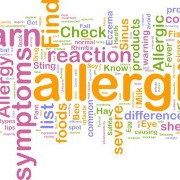 Photo: Getty Images
Photo: Getty Images
Food allergy sufferers can expect more standardized care thanks to guidelines presented by the National Institutes of Health (NIH). The Guideline for the Diagnosis and Management of Food Allergy in the United States is a report presented by a panel of experts sponsored by the NIH’s National Institute of Allergy and Infectious Diseases (NIAID). The purpose of the guidelines is to help medical professionals diagnose and manage the symptoms of food allergy.
NIAID Director Anthony S. Fauci, M.D. said, “Food allergy affects millions of Americans, and these individuals seek care from a wide variety of health care providers. Because these guidelines provide standardized, concise recommendations on how to diagnose and manage food allergy and treat acute food allergy reactions across specialties, we expect both clinicians and food allergy patients to greatly benefit from these clear state-of-the-science clinical standards.”
The guidelines provide consistent terminology and definitions for food allergy and establish consistent criteria doctors can use when diagnosing and managing food allergies. These criteria can benefit general practitioners as well as specialists in all fields dealing with food allergy patients including allergy, pediatrics, family medicine, internal medicine, dermatology, gastroenterology, and emergency medicine.
Joshua Boyce, M.D. chaired the 25-member panel of experts who developed the guidelines based on a review of literature pertaining to food allergy as well as their own clinical experiences. Boyce said, “We believe (the guidelines) provide health care professionals with a clear-cut definition of what constitutes a food allergy and a logical framework for the appropriate use of diagnostic testing and accurate interpretation of the results.”
Almost 5 percent of all children under age 5 and 4 percent of teens and adults in the United States are diagnosed with food allergy. Experts connected with the study believe this is a serious health concern in the United States, especially since the number of cases of food allergy continues to rise. Food allergy can cause life-threatening reactions and can affect overall health, nutrition, and quality of life. At the present time, there is no cure for food allergy. Doctors recommend testing to identity food allergens that must be eliminated from the diet to avoid an allergic reaction.
The guidelines released in December 2010 are intended to help doctors and other medical professionals better understand food allergies including how to diagnose and treat patients who have food allergies. The authors of the guidelines expect to release a simplified synopsis of the document early in 2011. The synopsis will be written in language that will be easier for lay people to understand. More information on the guidelines is available at the NIAID food allergy guidelines portal.
Source
National Institute of Allergy and Infectious Diseases






Add a CommentComments
There are no comments yet. Be the first one and get the conversation started!